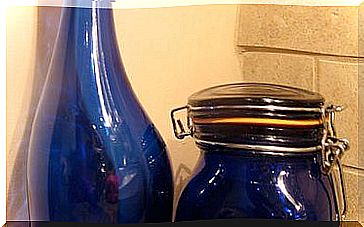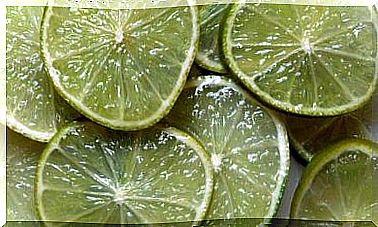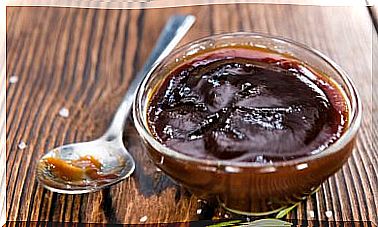Praise Of Routine: Routinize Less And Stimulate Creativity More
Routine is both an organizer and a computer of our life. However, the abuse of habits and rituals make it become monotonous and colorless.
It is necessary to stimulate creativity to create a balanced equation between routine and creation. This seems to be the formula to activate our brain neuroplasticity and have a healthier life.
Let’s go deeper.
Routine?
Routine, as the dictionary of the Royal Academy designates it, derives from the French r outine and it is defined as ‘a custom or habit that is acquired from the numerous repetition of the same activity or task’.
Thus, the development of a certain routine leads to the automatic systematization of an action or series of actions over time, which implies that this is carried out without mediating reasoning or awareness of the action.

The life of all human beings is absolutely routine. In fact, program developments of any kind operate as organizers of steps to follow and with this, certain routines are structured in order to achieve objectives.
This is observed in the diet programs to lose weight, the systematized routines of the gyms to carry out bodybuilding, the training plans of running or therapeutic programs for addicts or alcoholics.
A program basically determines what can and cannot, in addition to possessing and indicating a series of borders: the actions to be followed, the sequence, the minimum goals, the final objectives, the context in which the actions are developed, the participants or time, among so many variables.
The repeated exercise of a program is systematized in a person’s life and will be part of their daily routine, if it is to be applied every day.
Work and routine
One of the areas in which the routine is viewed with the greatest treachery is in the workplace. In certain mass production machines operated by men and women, the routine is made up of a series of automatic movements in which consciousness is lost.
However, this type of stereotyped actions has its risk, mainly in those machines that cut, twist, squeeze and, in the event of any distraction, can cause damage to whoever executes the movement.
Routine automatisms lead to loss of attention and drowsiness. Let us bear in mind that the brain does not accumulate glucose, but consumes it at 25% of the body’s expenditure. It is possible that, after an hour and a half or two, that fuel is lost and symptoms of hypoglycemia such as loss of control, attention, sleep, distractions, among other symptoms may occur. And there you run a lot of risk!
Also the daily life consists of a chain of routines that we organize. Every day, millions of people get up at a certain time (taking into account that this time is in relation to the income of the working day), they shower, brush their teeth, organize their clothes, eat breakfast (and what they have breakfast), work (on foot, by train, bus, motorcycle, bicycle, car), and finally reach their destination.
On this basic routine template there are a series of rituals that color it: I pour myself another coffee that I buy at the Starbucks from the corner of work, I pass the interdental floss after having cereal for breakfast, I wear a certain perfume depending on the day, etc.
The ritualism of routine
Ritualism it forms an important part of the routine. Rituals, like routine in general, are computers. Now, I am not talking about knightly ritualism, based on magical thinking, of repeating some action so that the result is the desired one (eating, for example, the same food when my favorite team plays, because “I always win when I do it”) .
Nor am I talking about the pathological ritualism of obsessive compulsive disorder, in which you always walk the same tiles on a sidewalk or wash your hands exactly 18 times. All these rituals are ruminant, exhausting and have little to do with order and routine.
Healthy rituals
There are healthy rituals that are part of a person’s general routine. For example, playing sports on a number of days at a certain time during the week, taking an afternoon off to cut off work for the week, or taking a Wednesday morning to read at our favorite bar.
Some of these healthy rituals are taught in psychotherapy as a homework prescription. An attempt is made to insert a habit in the person that de-stresses it, connects it with health and with an activity that produces pleasure.
- If this ritual can be systematized as a habit, there has been a small change in the person; change that will result from a domino effect, other changes or a major modification. Habits and rituals, then, are the soldiers who fit into the routine.
However, it must be said that the routine does not have good press. It has been one of the states of man most battered, criticized and disqualified historically. It is normally associated with rigidity, apathy, boredom, more of the same, boredom.
The routine is usually considered as the opposite of creativity, which is why vacations are constituted in the period to leave the routine aside and project into activities that, due to work obligations or duties of any kind in the year, cannot be done.
Routine and routine are not the same

The routine tells us that it is not necessary to invent anything new. If something works, and it works correctly with a routine, let’s not try to improve it! Sometimes we try to perfect or modify something that is going perfectly well. It is a mechanism that provides safety , since it reduces surprises and unforeseen events.
However, it can lead to routinization, which is the abuse of routine. C hen a person becomes routine, he systematizes his life in such a way that creativity is aborted. The ritualization and systematization of habits to the extreme turn a boring, monotonous and discolored existence.
So it is not the routine to be criticized, but the ” routine Of the routine” . This is what I call routinize An attitude that mutilates creativity, spoils free time and can lead – as seen in the statistics of large cities – to depression, stress and suicide.
Routine can be a great ally
I suggest that we be aware of that line between good routine and abuse. Breaking certain habits can increase originality; alter certain steps, remove rigidity and devise new programs, encourage derutinization .
The abuse of routine always perpetuates the same neuroplastic network pathways. Activating them implies creating and having new ideas that constitute new alternative paths to those networks: when we break with routine abuse, we create new paths that favor creativity and, of course, the good life .









